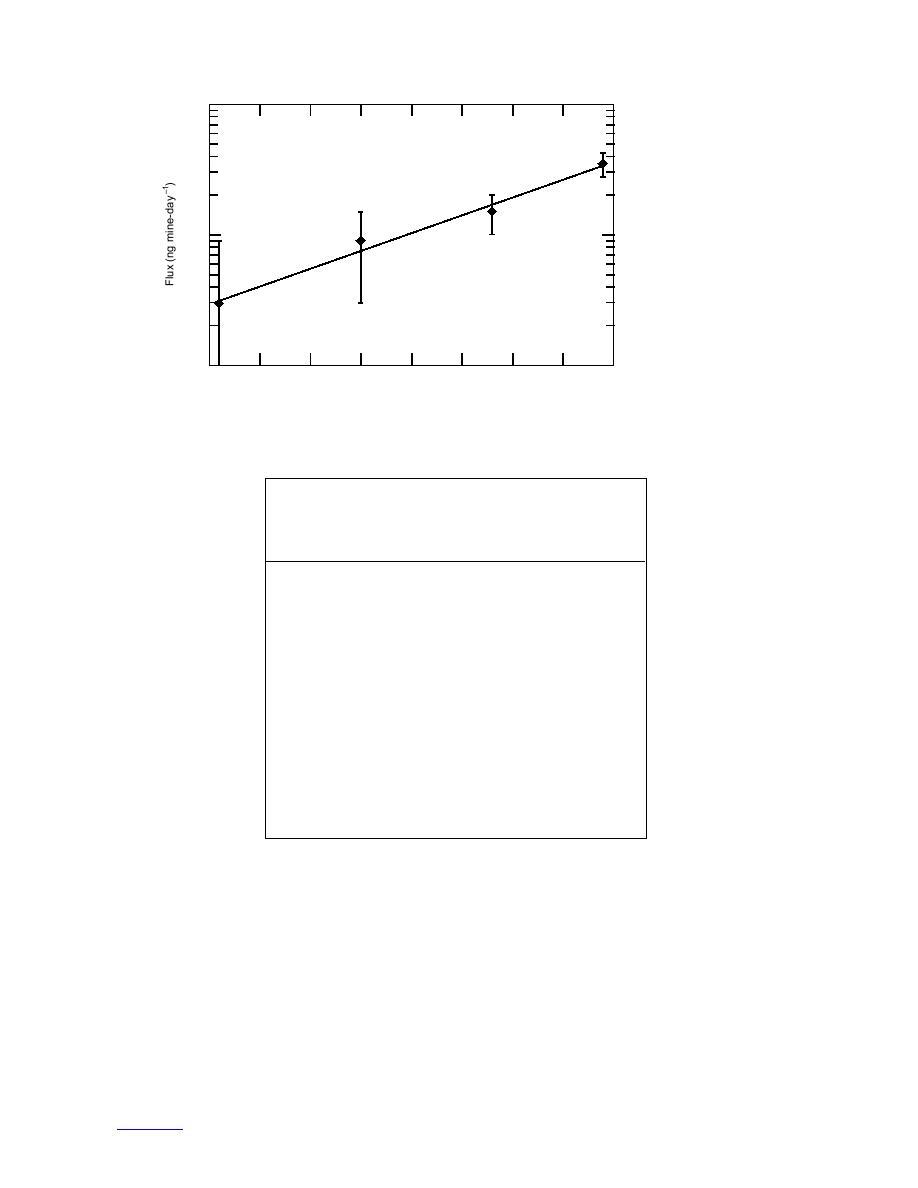
2
10
1
10
RDX
f. VS-50.
y = 4.12 e0.0621x
(R = 0.994)
0
10
5
0
5
10
15
20
25
30
35
Temperature (C)
Figure 1 (cont'd).
Table 2. Temperature dependence of mean ERC flux by
mine type fitted to F = aebt.
Est. flux (20C)
Slope
Intercept
ERC
Mine
(b)
(a)
R
(ng/mine per day)
DNT
TMA5
0.1169
1461
0.9878
15,100
PPM2
0.117
1235
0.9997
12,800
PMA1A
0.0943
261
0.9722
1,720
TMM1
0.118
146
0.999
1,550
PMA2
0.114
29
0.995
282
DNB
PMA1A
0.0866
797
0.9618
4500
TMA5
0.1139
357
0.9849
3480
TMM1
0.0986
39
1
282
PPM2
0.1138
37
0.9989
358
PMA2
0.112
35
0.996
332
TNT
TMA5
0.1055
167
0.9893
1380
PPM2
0.1127
134
0.9988
1280
TMM1
0.121
66
0.997
740
PMA1A
0.1052
25
0.9837
207
PMA2
0.11
3
0.971
24
RDX
VS-50
0.062
4
0.994
14
mines by an order of magnitude. DNB is more vari-
measurements, which was not done in the original data
able. RDX flux from the VS-50 was small but compa-
collection.
rable to TNT flux from an AP mine of comparable size.
DNT is the most abundant analyte in the flux; it var-
As shown in Appendix A, relatively trace amounts of
ies greatly with mine type and size, with the larger plas-
DNT, DNB, and TNT were also detected in the flux
tic mines giving rise to larger fluxes. The relatively small
from the VS-50. The origin of these contaminants is
flux of DNT and DNB from the large metal TMM1
uncertain. The casings may have become contaminat-
compared to its size is undoubtedly attributable to the
ed by external vapors during storage (Bender et al. 1992,
impermeability of the metal casing. The slope was 0.06
Leggett et al. 2000), or the explosive charge may have
for the one type of RDX mine examined. DNT domi-
been contaminated with TNT.
nates TNT in the signature from plastic, TNT-filled
5



 Previous Page
Previous Page
